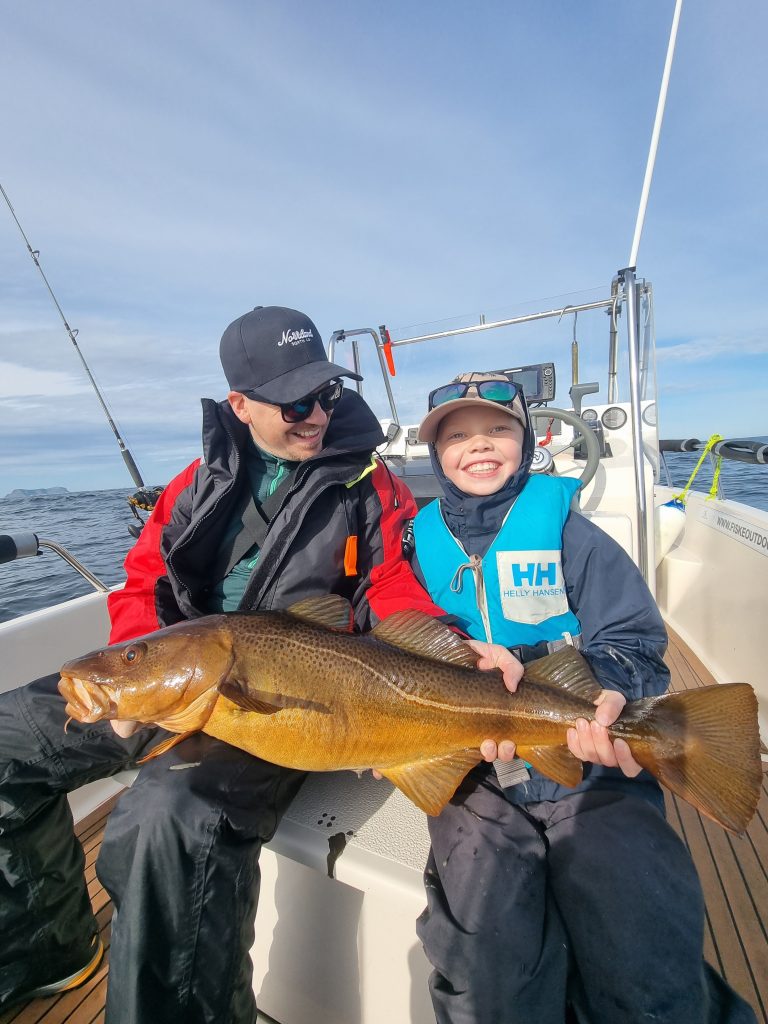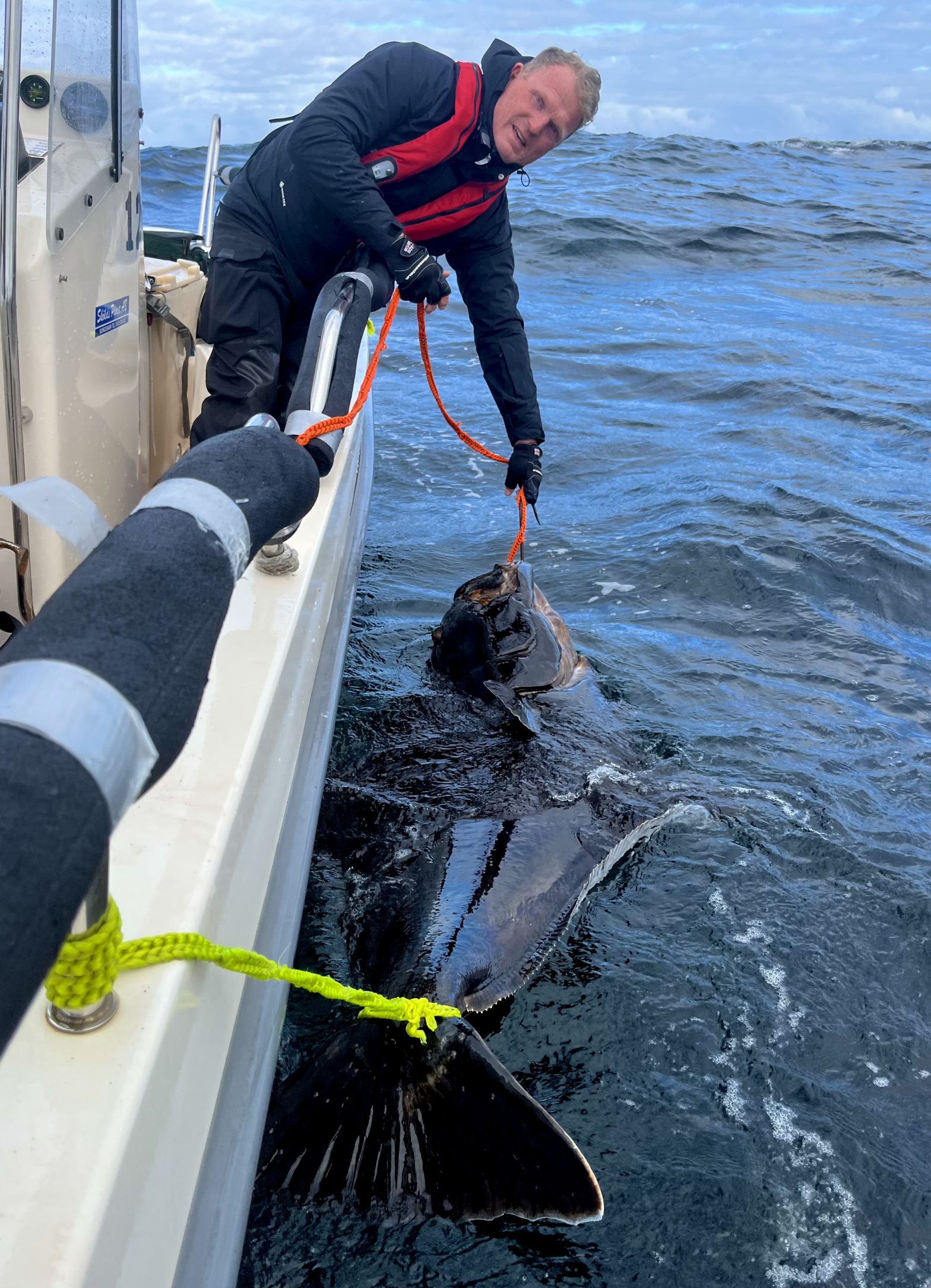
Fishing big halibut is a dream for many of our guest anglers. In Southern Lofoten Island, the waters hold the Giant of the Flatfish Family. Let’s dive with some FAQs into the world of record-breaking halibut catches.
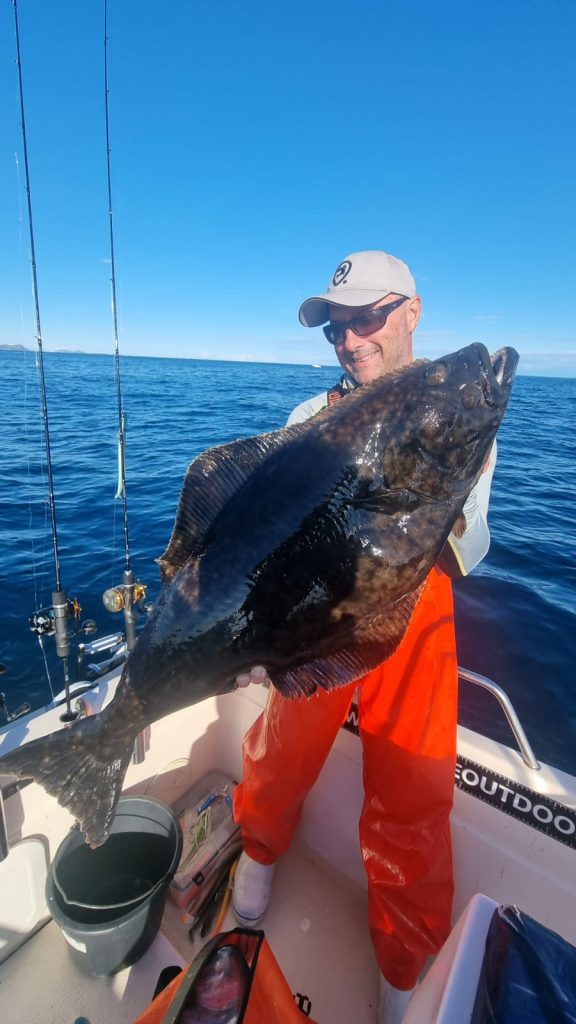
The influence of latitude on growth potential has long intrigued marine biologists. Boehlert and Kappenman’s 1980 study ignited this curiosity. It revealed striking differences in life history strategies among species inhabiting expansive latitudinal ranges. Here are some questions to help to understand the Atlantic Halibut :
Northern fish populations often exhibit greater growth potential compared to their southern counterparts, as highlighted by various studies.
Temperature is a critical factor influencing halibut growth. With slight increments benefiting growth rates, while excessive increases could lead to stagnation.
The midnight sun, by extending daylight duration at higher latitudes. It provides more time for visual feeding, contributing to enhanced growth rates.
Nevertheless, prey abundance is obviously another influential factor in fish growth, as highlighted in the literature.
You embark on your quest for the monstrous halibut in Southern Lofoten Island. Just remember that every catch holds a tale of adventure and passion. The journey of reeling in these giants will test your skills and leave you with unforgettable memories. Respect the waters, cherish the moments, and savor the joy of landing the biggest halibut of your life.
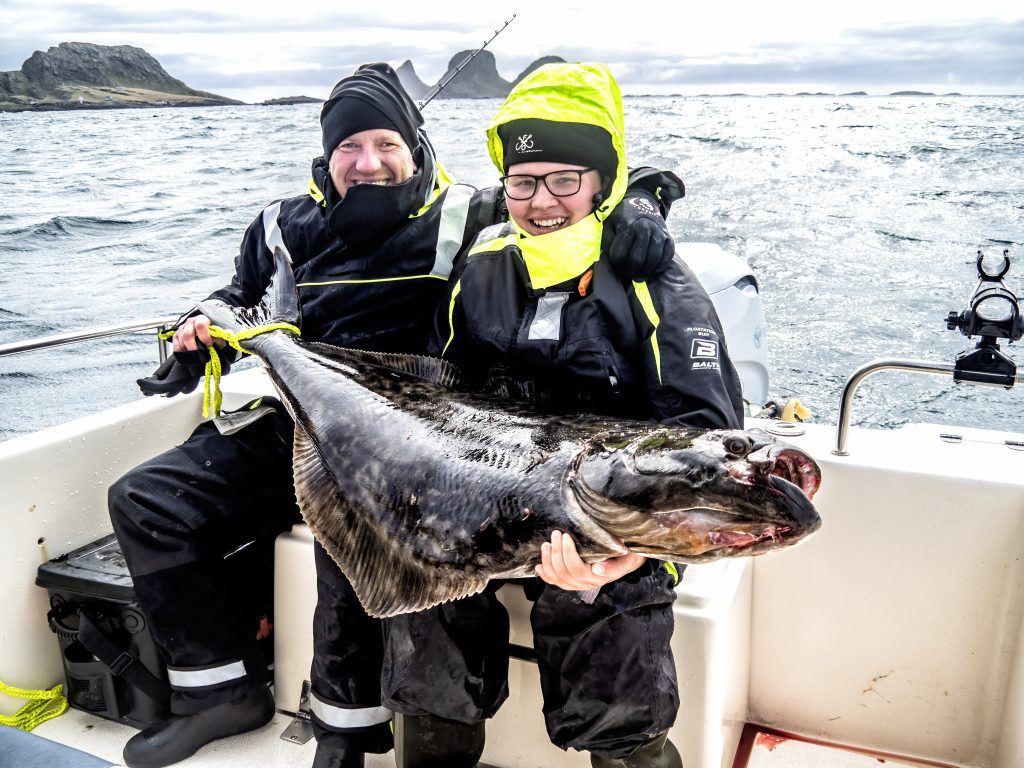
The current IGFA world record for the largest halibut is not in Norway. He’s held by Jack Tragis, who caught a staggering 459 pounds (208.2 kg). A Pacific halibut off Dutch Harbor, Alaska, in June 1996. It remains the all-tackle world record for this species. Besides the current world record, Thomas Nielsen set a record for the largest Atlantic halibut. Weighing 418 pounds (189.6 kg), caught while bait fishing in Vannaya Troms, Norway, on July 28, 2004.
1st place : 235 cm – Ingmar Boström estimated at 180.8 kg (398 Lbs)
A gigantic halibut caught by Ingmar Boström at Camp Röst, Norway, the 4th of June 2015. Guided by Henric Wigren. The fish was measured at 235 cm in length before it was released. According to Catch and Release tables, the estimated weight is 180.8 kg (398 Lbs)! For a sneak peek of this action, you can watch the video of this insane fish here.
2nd place : 233 cm – Håkan Alfredsson estimated at 176 kg (387 Lbs)
3rd place : 230 cm – Sebastian Bruckert. An estimated 169 kg (372 Lbs)
Caught this season’s in June 2023
Yes, besides the current world record, Thomas Nielsen set a record for the largest Atlantic halibut. Weighing 418 pounds (189.6 kg), caught while bait fishing in Vannaya Troms, Norway, on July 28, 2004.
Certainly, the latest story is detailed here on our blog. When Gilles Fonseca hooked up, a 155 cm beast. Literally 10 seconds after, he broke loose from the line on the other side of the boat. This one was one hungry predator for sure.
The Lofoten Islands offer fantastic halibut fishing year-round. With a blend of breathtaking scenery and skilled guides. It’s a paradise for anglers seeking the thrill of landing these colossal flatfish. The beginning of the seasons is usually a good period. We target the biggest fish that have come to spawn in the shallower waters. But not all the big ones go back to their deepest habitat immediately. Many of the big ones take the opportunity of the huge amount of bait fish. They feed heavily on the Rost sea shoals before fall. And the 187 cm caught in August by Johan is proof that not all big ones leaves the shallower grounds. And not to mentioned that last year, 4 halibut over 200 cm mark were caught at the camp in July. Read the story of team hope and their 208 cm from last year.
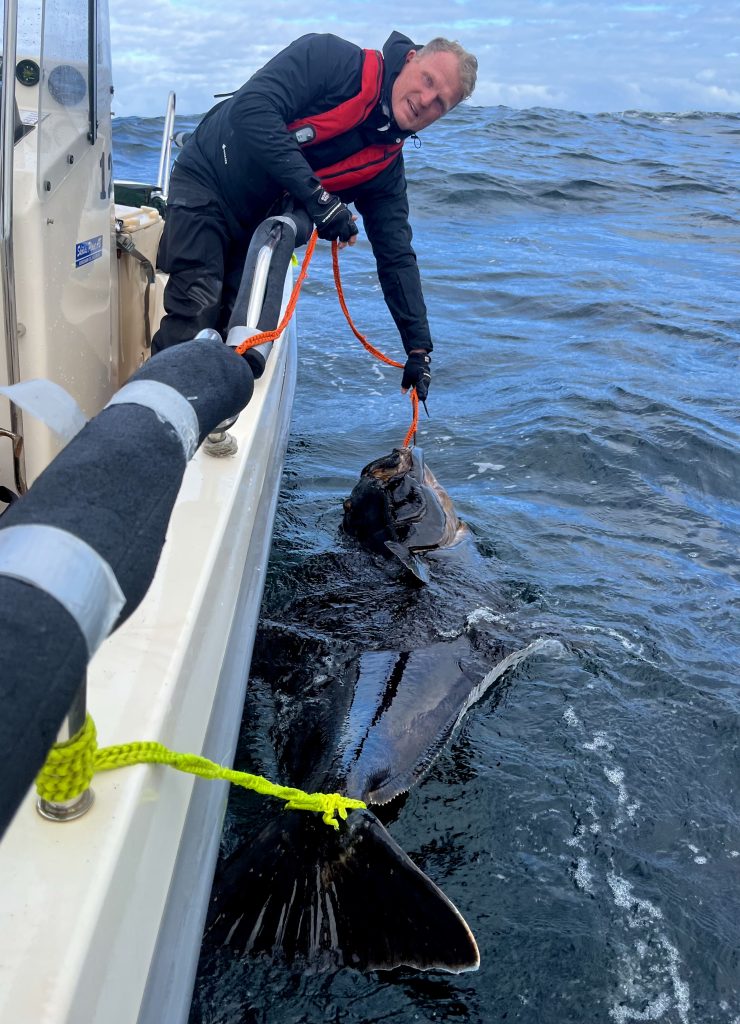
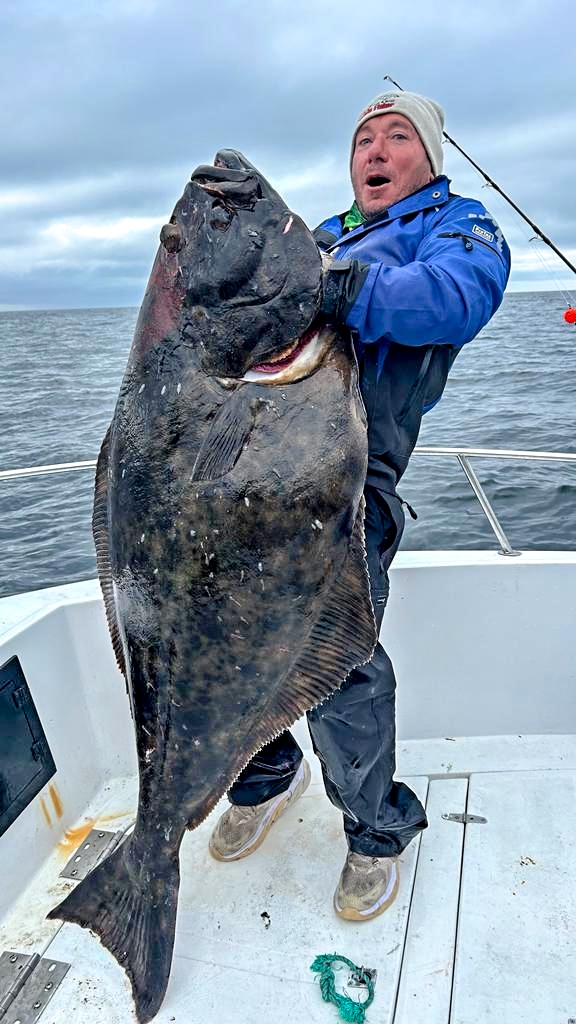
In Norway, it’s mandatory release of halibut more than 2 meters in length. This rule apply to all fishermen, from sports to professionals. Large halibut are essential for the species’ breeding stock. Releasing them ensures their continued survival and contributes to sustainable fishing practices. The 84 cm legal size is a good thing. But at the camp we recommend to our guest to catch and release also the big ones above 130 cm.
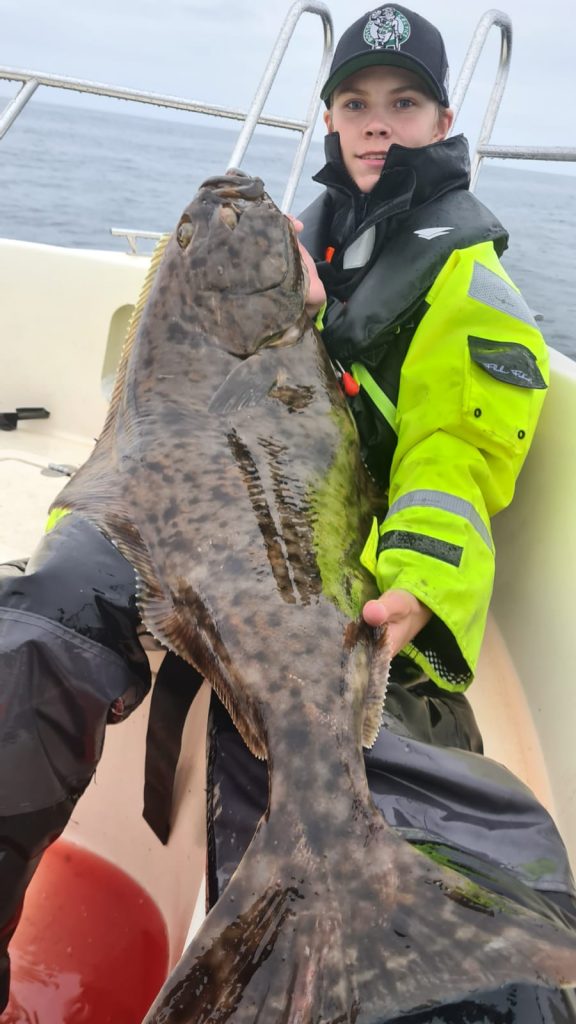
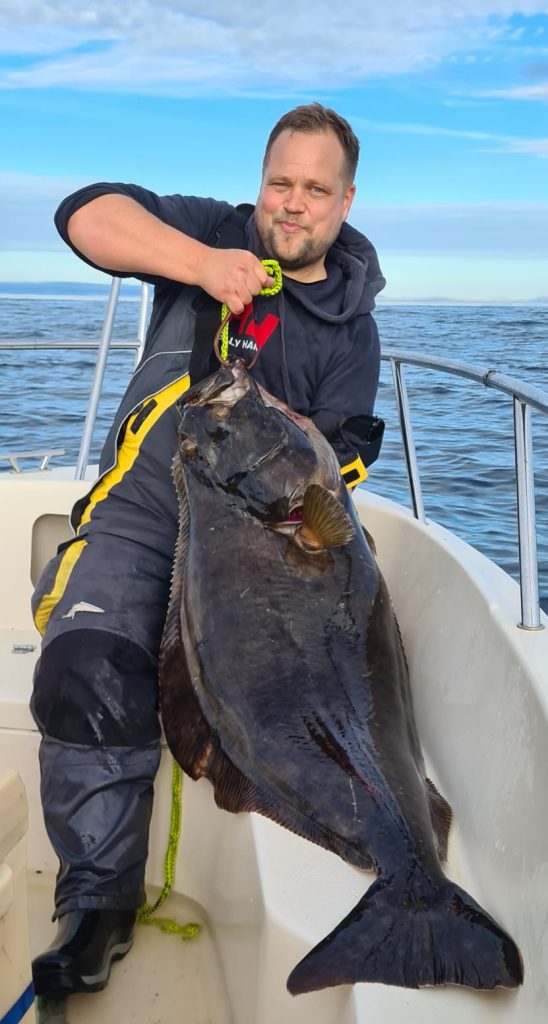
Anglers can organize fishing trips to our camp from May until September. Our team of experts will handle all the arrangements. Ensuring a smooth and enjoyable experience for anglers from around the world. Contact us for your next adventure.
